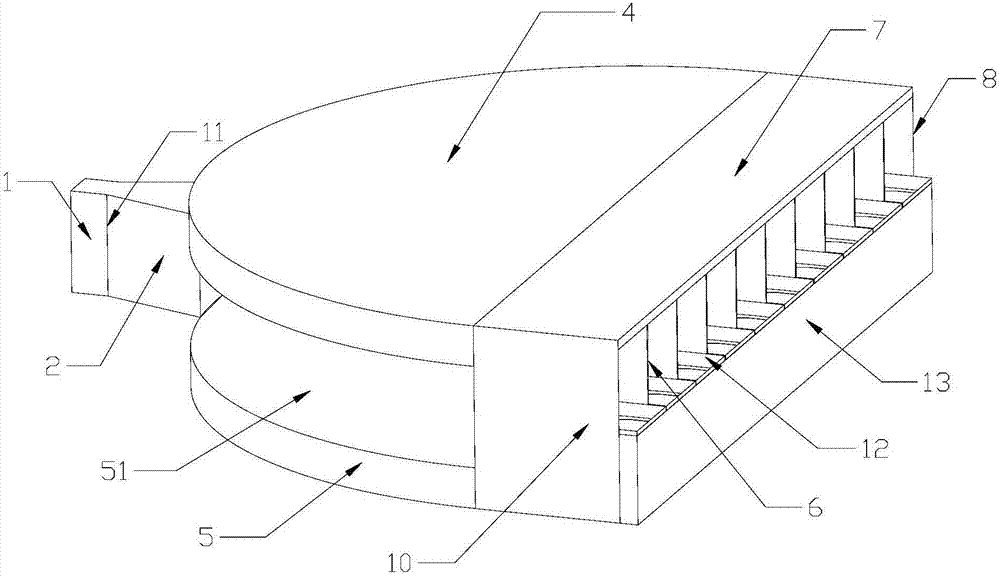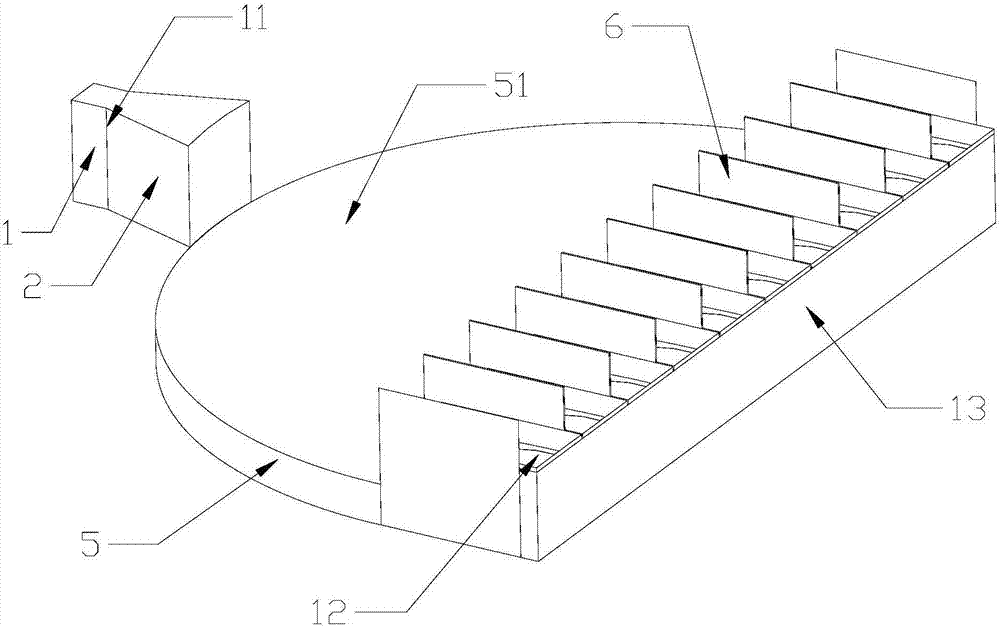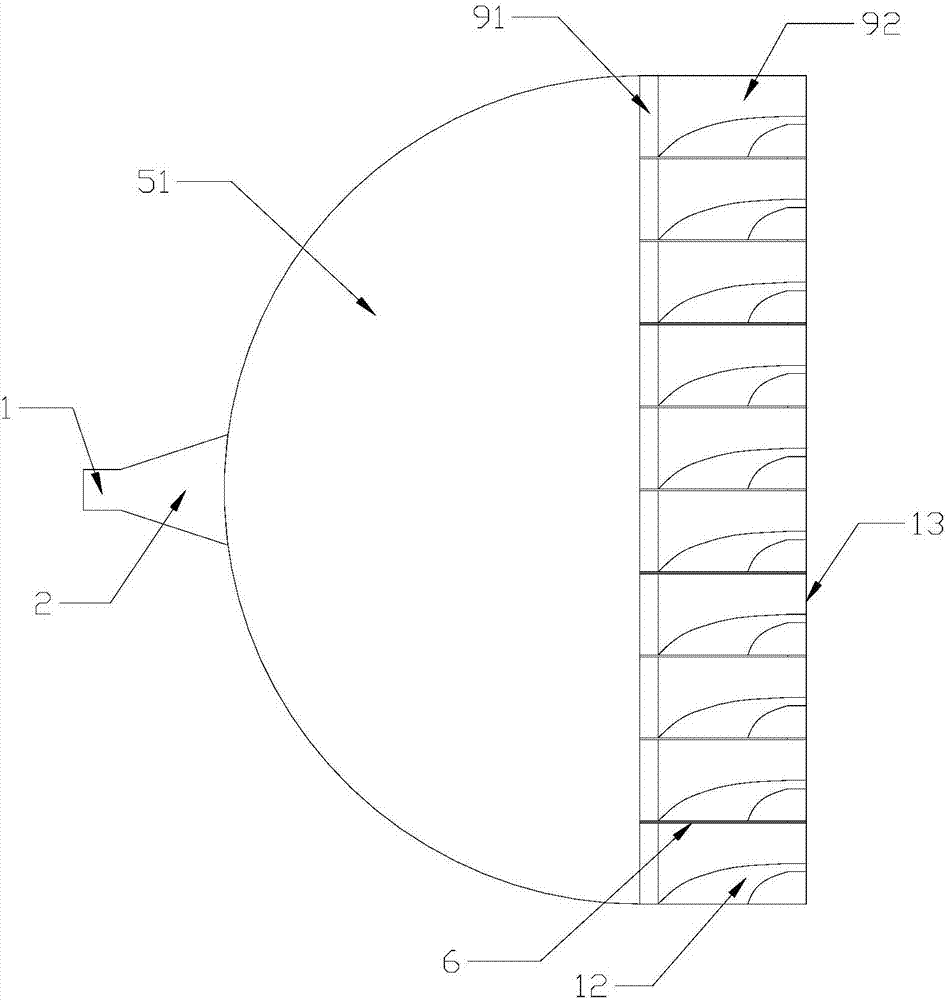Millimeter wave space power divider and millimeter wave space power combiner
A technology of power divider and millimeter wave, which is applied in the direction of waveguide devices, electrical components, connecting devices, etc., and can solve the problems of large insertion loss, small power capacity, unfavorable power distribution/combiner miniaturization design in the millimeter wave band, etc.
- Summary
- Abstract
- Description
- Claims
- Application Information
AI Technical Summary
Problems solved by technology
Method used
Image
Examples
Embodiment 1
[0020] Embodiment one: if Figure 1-4 As shown, a millimeter-wave spatial power divider includes a standard rectangular waveguide 1, a transition waveguide 2, an air lens, and an output array arranged in sequence from front to back. The structure of the transition waveguide 2 is in the shape of a bell mouth. The standard rectangular waveguide 1 is connected, and the rear end of the transitional waveguide 2 intersects with the air lens. The air lens includes two metal semi-discs arranged symmetrically up and down. The metal semi-discs retain the required parts according to the principle of the improved Maxwell fisheye lens and Remove the part that the signal cannot reach and present a semi-disc shape. The principle of the improved Maxwell fisheye lens is basically the same as that of the Maxwell fisheye lens. The only difference is that the refractive index distribution function of the improved Maxwell fisheye lens is n(r )=N 0 / [1+δ(r / R) 2 ], where N 0 and δ are two adjusta...
Embodiment 2
[0022] Embodiment 2: This embodiment is basically the same as Embodiment 1, except that in this embodiment, the thickness of the high-frequency dielectric plate is equal to 20 mil.
[0023] The present invention also discloses a millimeter-wave spatial power combiner. The millimeter-wave spatial power combiner of the present invention will be further described in detail below with reference to the embodiments of the accompanying drawings.
[0024] Embodiment 1: A millimeter-wave spatial power combiner, including an input array, an air lens, a transition waveguide 2 and a standard rectangular waveguide 1 arranged in sequence from front to back, the structure of the transition waveguide 2 is in the shape of a bell mouth, and the rear of the transition waveguide 2 The end is connected with the standard rectangular waveguide 1, and the front end of the transitional waveguide 2 intersects with the air lens, which is characterized in that the air lens includes two metal half disks ar...
PUM
 Login to View More
Login to View More Abstract
Description
Claims
Application Information
 Login to View More
Login to View More - R&D
- Intellectual Property
- Life Sciences
- Materials
- Tech Scout
- Unparalleled Data Quality
- Higher Quality Content
- 60% Fewer Hallucinations
Browse by: Latest US Patents, China's latest patents, Technical Efficacy Thesaurus, Application Domain, Technology Topic, Popular Technical Reports.
© 2025 PatSnap. All rights reserved.Legal|Privacy policy|Modern Slavery Act Transparency Statement|Sitemap|About US| Contact US: help@patsnap.com



